A Student Pilot Struggles With Making Progress and The Elusive Concept of “Greased Landings”
[This is the seventh in a series of articles detailing my journey to earning a private pilot certificate. Click to read: Part 1, Part 2, Part 3, Part 4, Part 5, Part 6.]
After rolling around all night with a cold, the only thing that compelled me to climb out of bed was knowing today would be the perfect day for flying.
My flight lesson was scheduled at noon, and I had spent the last couple weeks (my last two flight lessons were canceled due to snow storms) listening to a recording of myself reading the non-standard landing patterns for Truckee-Tahoe Airport, my current home base for flight training. As I prepared to leave, I tried to commit to memory the landing routine, from GUMPS to the speeds, RPMs and flap configurations for each leg of flying the pattern.
When it came time to split, I grabbed my flight bag and clamored over the lumpy frozen pond that is my driveway and hopped in the car. The whole way there, I recited the steps to each of the arrival and departure patterns for the main runways and directions I was used to using. Due to the super calm winds, I figured we’d stick with runway 2-9, and I was right! Unfortunately, I spent more time memorizing the arrival procedure from the north (where the training area is located) than I did the flaps and RPMs for flying the pattern since I thought we’d be practicing ground reference maneuvers. Dave, my instructor, had other plans.
As I parked outside Sierra Aero, the flight school office, I got a text from Dave: “Plane is in front of terminal.” I grabbed my flight bag and made my way to the terminal building, which was full of people talking and making flight plans over coffee and wonderful, expensive, organic hippie food (as is life in Tahoe) from the Red Truck Café.
Pre-Flight Checklist and Dreaming of Steam Gauges
I stepped out into the sunlight and saw both C172 trainers from Sierra Aero parked nearby. Though I started walking toward 68F, the blue and gold glass panel Skyhawk I’ve been training in with Dave, I kind of hoped that he would switch things up and I would get to fly the red and gold steam gauge Skyhawk, 10H, that I started my training in with Sarah, my old instructor.
I tossed my stuff into the back of 68F and went about the pre-flight routine, admiring the gorgeous, calm day, brisk but sunny, and how beautiful the navy blue paint looked under the perfect azure skies. I ran my hand across the empennage as I walked around to check the horizontal stabilizer, thinking how wonderful it’d be to do this to my own airplane someday. As my fingers trailed over the leading edge of the right wing, feeling the nicks and dents and bugs, I imagined a future me shining and polishing my very own airplane in the sunlight of a perfect flying day, like this one. I sighed, patted the wing strut, and went about checking the leading edge of the prop, equally chipped and in need of love.
Last Minute Studying
After I finished the pre-flight, I hopped into the cockpit and plugged my headset in (blind fumbling for the holes underneath the panel is even harder when your instructor is watching), and continued reading over the routines for landings. As you enter the downwind, pull the power back to 2200 RPMs. When you beam the numbers, carb heat on, power back to 1500 RPMs, first notch of flaps. As you turn base, second notch of flaps. On final, speed should be around 65kts, and you add the third and/or fourth notch of flaps, as necessary, then…
“Hey Carly,” Dave called from a few yards away. I waved and climbed out of the cockpit, shoving my flight bag and training materials back into the back seat. “How’s it going?”
“Hmm…” I grumbled, my scratchy throat and messed up sinuses producing the inflection unique to those on the tail-end of a cold. “I’m kinda sick.”
Dave halted his walk toward me and took a theatrically overdramatic step backward. “Are you going to get me sick?”
I laughed, “Uh… no? I don’t have a fever anymore so I guess I’m not contagious?”
“Are you good to fly today?”
“Yes! I mean, I really want to fly today, anyway.”
He shrugged and we went about tugging 68F over to the fuel island for a refill. You all will be happy to know, I didn’t overflow Avgas onto the wing this time, and it all went very smoothly!
Double the Airplanes, Double the Learning?
After we finished refueling, we stood outside as Dave asked if I had any questions, and I tried to scrape some from the back of my mind. Oddly, whenever he asks that my mind goes completely blank and I can’t come up with any questions to ask. Maybe he thinks I’m just very confident in my skills, but in reality, I feel like I know so little I don’t even know what I don’t know.
However, I did take this opportunity to test the waters regarding me splitting my flight time with him at Truckee with 68F, and with another CFI in Minden with the Piper Cherokee 66R. I find myself enjoying flying the old Cherokee much more than the glass panel C172, and it is just incredibly more affordable to fly in Minden as part of Bryan’s flying club, High Sierra Pilots, than here with the $150/hr plane, $75/hr instructor, and having to provide my own insurance.
Aviation Safety: The Right Mindset and Attitude Are As Important As Skill
Pilot skills are important but data shows accidents begin in your head, and the right mindset and attitude are a key part of aviation safety. Flight safety is not just a mechanical, tactile, procedural and practiced process. Flying begins in your head.
Essentially, he said I should wait until I have a decent mastery over handling an airplane (post-solo) before I confuse myself with different airplanes and instruction methods, which I definitely understand. While he was explaining all this, I couldn’t help but think that learning to fly in two very different airplanes would make me a better all-around pilot by the end of it. For example, learning to swim breast stroke and back stroke at the same time didn’t make me worse at either one. Learning to play clarinet and saxophone simultaneously made me a better musician, and learning to paint with watercolors and draw with chalk pastels in the same art lesson made me a more well-rounded artist. Trying to learn French and Spanish at the same time, however, did muddle things a bit…
Either way, I have to concede that Dave is the superstar CFI ‘round these parts, and every pilot and CFI I’ve met within a 50-mile radius sings his praises.
Flying the Pattern and Touch-and-Go’s
Once we ran through my questions, we got in the airplane and taxied to the run-up area by runway 2-9, preparing to do pattern work to “take advantage of the weather,” Dave said. When learning to land as a student pilot, eliminating as many variables as possible seems to be the way to go, and since the winds were just about as calm as I’ve ever seen them, Dave wanted to do a bunch of touch-and-gos.
As we sat in the run-up area going through the checklist, tiny glints of light in the distance and a bunch of radio chatter made it clear we weren’t the only ones taking advantage of this perfect flying day. A helicopter was scooting around somewhere over to the northeast, and a Husky was calling in that he was turning base for runway 1-1, though we couldn’t see him from the ground. Weird, I thought, winds are calm, why aren’t they using runway 2-9 like everyone else?
I shrugged it off because Dave was handling radio calls at this point in the lesson. He seemed suspicious, however, so once I finished the run-up checklist, we decided to wait for the Husky to land. Chatter between the helicopter, the Husky, and Dave eventually made it clear that the Husky had no idea what was actually going on. Eventually, everyone figured out that the Husky was indeed trying to land on runway 2-9, (“Truckee: Husky, sorry I was looking at the wrong runway- coming in on final for runway 2-9, Truckee”) and Dave made our last ground call.
First Take Off of the Day
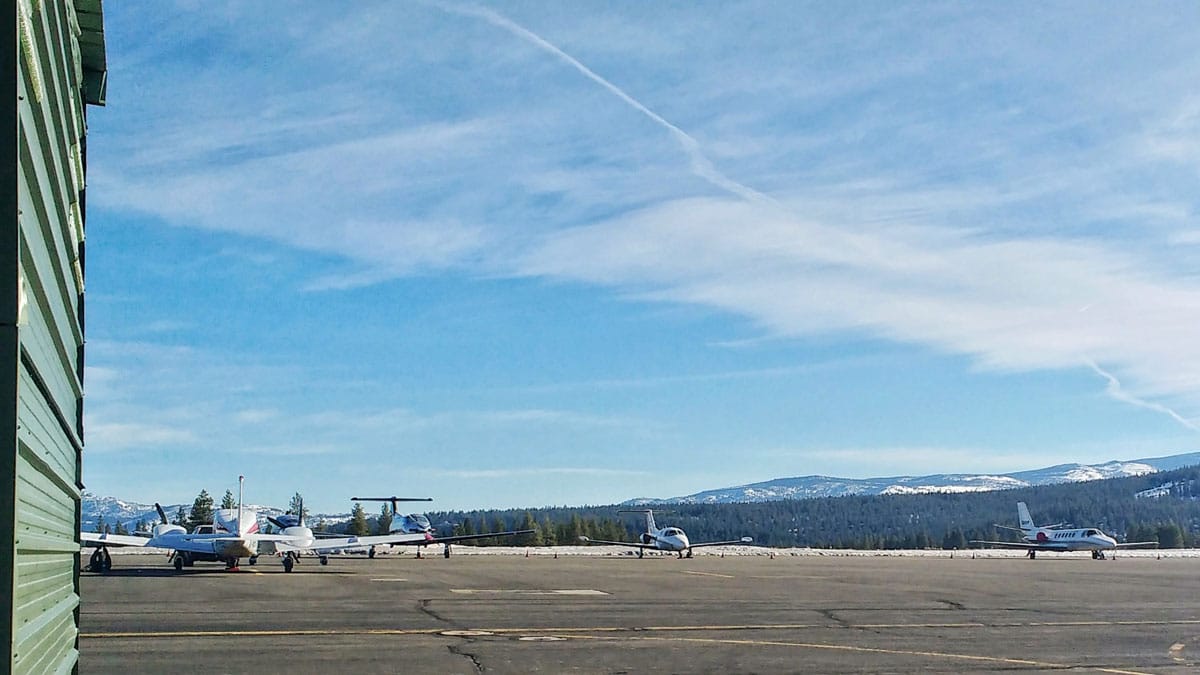
On takeoff, I remember the last time I veered off the runway (RIGHT RUDDER RIGHT RUDDER RIGHT RUDDER!) and corrected my tactics. When we peeled off at 55kts, I got to the proper height and made the pitch attitude a little less aggressive so I could continue to gain airspeed. At Dave’s direction, we veered a little right over the bypass (noise abatement), and then turned left crosswind over the freeway. I was feeling pretty good!
After we reached traffic pattern altitude (TPA) and turned downwind, I pulled the power back to 2200 RPMs. I kept inching in closer to the runway, and Dave had to remind me more than a few times over the course of the lesson to point the nose at the “snowy V-shaped space between those two mountains.”
We reached the numbers, and Dave prompted me: “Okay, there are the numbers…”
My mind went blank. Crap. Um, “Power back to 1500?” I half asked, half stated. Dave nodded, said, “Almost,” and reminded me to go left to right, starting with carb heat. Carb heat, power back, first notch of flaps.
“And don’t forget, when you put in a notch of flaps, expect the nose to balloon up and get ready to counter that with forward pressure. Whenever you adjust pitch, power, or flaps, you’re gonna have to re-trim,” Dave continued. He made the downwind-to-base call, and I turned (too sharp) perpendicular to the runway and put in the next notch of flaps. He reminded me to relax the bank angle and to stop watching the runway.
“Keep your eyes ahead, the runway isn’t going to go anywhere, but the plane might.”
We turned final and I had to use some rudder to line us up with the center line, and we were coming in a little hot, so Dave instructed me to put in the rest of the flaps. As the ground came up to meet us, I got a little nervous, and even though Dave was telling me to pull back (among other things), the yoke felt like it was fighting me.
After we touched down not-so-gently and zig-zagged around the center line, Dave quickly talked me through powering up for a touch-and-go. Steering with my feet, we turned off the carb heat, throttle to full power, and retracted the flaps so quick I felt like I was in a high stakes Bop-It tournament. Click it, jam it, flick it.
Failing at Radio Calls and Landings
As we took off again, Dave asked me why I was fighting him on landing. Suddenly the pieces snapped into place, and I realized I wasn’t fighting the plane at all, but Dave. Weird as it sounds, it was a bit of a relief. I apologized, and Dave made it clear that if I ever have to use that much force on the yoke, it’s because something is very wrong. We passed the controls, and Dave demonstrated a perfectly executed traffic pattern and landing with me shadowing his movements and listening to the radio calls. We touched down, powered up, and it was my turn again.
This time, Dave instructed me to make the radio calls. We climbed up to TPA, veered right over the bypass, then followed the highway before turning downwind. Dave briefly talked me through the call, and then it went a little something like this:
“Truckee traffic, 68F- uh, Skyhawk 68F turning right downwind, Truckee traffic.”
Dave: “Left downwind.”
Me: “Oh, crap.”
“Uh, left downwind, sorry.”
If I wasn’t controlling an airplane, I would have face-palmed so hard my ancestors would feel it.
Immediately, another (now confused) pilot came on the radio trying to clarify where I was and where I was going. Dave took over the radio call, cleaned up my mess, and I continued flying the pattern the rest of the way with my tail between my legs.
We turned base, and Dave again reminded me to “fly out of the front window, the runway isn’t going anywhere.”
This time, the turn to final wasn’t too sharp, and we weren’t going too fast. Kill the throttle, third notch of flaps, stick to the center line. I kept my eyes down the runway, and Dave reminded me to let the plane level out “six inches over the runway, and don’t let it land.”
After we got down to what felt like six inches over the runway, Dave instructed me to pull back to transition to flare. Well, I pulled back alright, a little too hard, and up we went again. I could feel a blush creeping up my cheeks as I nosed over and Dave took the controls and guided us down for another less than graceful landing. I muttered an apology as we powered up to take off again. Dave laughed it off and said, “If you knew how to do this already, you wouldn’t be here.”
Though I know that’s true, I was mentally kicking myself for not being better by now. If I can’t land, I can’t fly. You can’t exactly do one without the other. More than once, anyway.
Mechanical Malfunction!
The following trip around the pattern went really well. I was able to trim precisely enough to take my hands off the controls completely and let the plane fly itself for a little bit on each leg of the pattern. I remembered to aim toward the snowy V on the mountain, nose over when I slide on each notch of flaps, and not to turn too sharp. As we turned final, we were going a little too fast again so Dave had me put in all flaps. I held the nose where I wanted, and kept fairly aligned with the center of the runway.
And there was the ground again.
Gently, gently, gently, I reminded myself. Again, Dave had to help me touch down, and I was getting pretty annoyed with myself. I could feel the sinus pressure start to return as the decongestant wore off, and I really just wanted to get one good landing in.
I started to go through the routine of powering up and whatnot to take off again, when Dave said, “We’re going to leave the runway on this one.”
Isn’t that what we do every take off? I thought to myself. Weird way of wording it. “You mean, take off?”
“No, turn off up here,” Dave said, pointing at a taxiway ahead. I pulled back the power and started to brake, wondering if I messed up so bad on the last landing that he was just done with me for the day, or if another airplane was coming in to land on top of us.
Dave gave the radio call once we were clear of the active runway and then said, “So, this happens with this airplane sometimes, so you need to get in the habit of checking. When you tried to retract the flaps, they didn’t retract. That wouldn’t have been good once we got airborne.”
My eyebrows raised as I glanced over my shoulder out of the side windows. “That’s not good… How can you tell? Can you feel it, or-?”
Dave shook his head, “No, the only reason I caught it is because I know this airplane. That’s why it’s always good to visually confirm. Luckily they never have a problem extending!”
“Okay, so what do you do if that happens? Flick the switch until it works or just abort the take off?” I asked, pretty sure I already knew the answer. Dave confirmed that aborting the take off is always the way to go, and as we taxied down to the end of the runway, Dave called my attention to the flaps slowly retracting out of the side window.
Last Two Landings of the Day
We turned back onto the runway, powered up, and took off for another two touch-and-gos before calling it for the day. I felt comfortable and happy with my flying, but both touch downs were less than perfect (though there was no more ballooning or panicking).
We parked 68F outside the terminal, and Dave climbed out while I filled out the check-out sheet for Sierra Aero, marking the Tach time. Only 0.9 hours today.
Once I gathered my flight bag and headset and hopped out of the cockpit, Dave asked me if I had any questions. I really only had one coherent question going around my head.
A Flight Instructor In Everyone: Solving the CFI Shortage
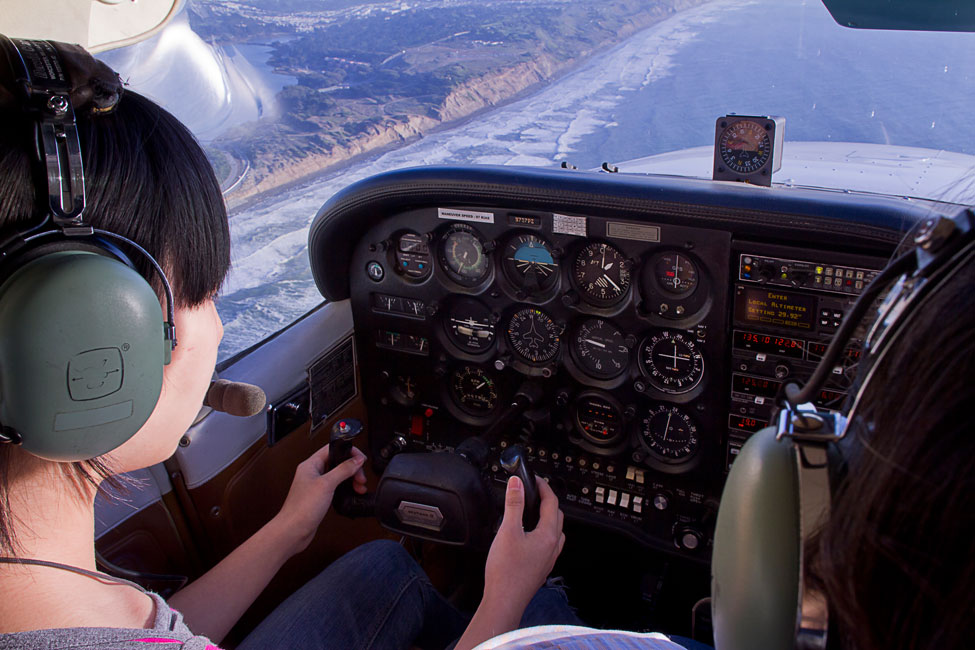 Yes, flight instructors have many interesting stories to tell. Lately, however, there just don’t seem to be as many CFIs around to tell them. In the last few years, aviation has experienced a significant migration of talent from the flight instructor community to the airline community. In fact, commuter airlines are now hiring pilots whose entire career fits easily in a single logbook! It’s not unusual to be hired at a commuter airline with 1,200 to 1,500 hours total time and 100 hours multi-engine time. Gone are the many 5,000 and 15,000-hour instructors who once [Read More…]
Yes, flight instructors have many interesting stories to tell. Lately, however, there just don’t seem to be as many CFIs around to tell them. In the last few years, aviation has experienced a significant migration of talent from the flight instructor community to the airline community. In fact, commuter airlines are now hiring pilots whose entire career fits easily in a single logbook! It’s not unusual to be hired at a commuter airline with 1,200 to 1,500 hours total time and 100 hours multi-engine time. Gone are the many 5,000 and 15,000-hour instructors who once [Read More…]
Seriously Questioning My Pilot Potential
“Dave, why do I suck?”
He burst out laughing. “Why do you think that?”
I told him I didn’t feel like I am where I should be with my flight skills, with the butchering radio calls and incompetence with landings. He had me pull out my logbook and quickly scanned it.
“You have about 7 hours of flight time, and it’s spread out over four months because of the weather. You only got to fly once this month.”
“Yeah but I know students are supposed to solo at ten hours and I can’t even land!” I blurted out.
Dave frowned. “Ten hours, who told you that? I didn’t tell you that.”
After I tip-toed around throwing the guy who told me under the bus, I admitted, “Someone at work.”

“No one solos at ten hours, Carly, most students up here solo around 15-20, even 25 hours or more. Take, for example, a pilot who learned to fly in Sacramento. They might solo around 10 hours and get their license, but once they come up to altitude, they’re going to have to spend five hours or more just re-learning how to get their plane off the ground. Since you’re learning to fly and learning how to fly at altitude at the same time, you’re just adding those five hours to the beginning of your training, instead of the end.”
I nodded and I felt a small smile tug at my lips. “Man, that really makes me feel better. Thanks.”
Dave continued, “If you sucked, I would tell you. If anything, you’re doing as well as, or maybe even a little better than most.” He then told me an anecdote about an older student pilot he had who couldn’t even taxi by 10-15 hours of flight lessons. Dave pulled him aside after a lesson and told him straight-up, “Hey, I don’t think this is for you.”
Raising My Spirits and Piling on the Homework
We chatted a bit more about how expectations and reality scarcely align, and how total flight hours in relation to progress means less when your lessons are spaced weeks apart. After he felt confident that I wasn’t mentally beating myself up anymore, he told me three specific things to work on:
- 1. Stop watching the runway and fly the plane. This includes not trying to see over the cowl when flared for landings.
- 2. Loosen up. No more death-gripping the yoke on landing- locking up is the worst thing you can do.
- 3. Listen to liveATC.net and get more comfortable on the radio.
In addition, I got a little bit of ground school homework to work on before my two lessons next week (weather permitting, of course!): the Gleim sections on weather theory and emergency procedures.
I walked away happy and looking forward to my next two lessons, and even though I didn’t get that one good landing I was hoping for, the lesson felt like a success. It’s always exciting to find out you don’t suck at something you love!






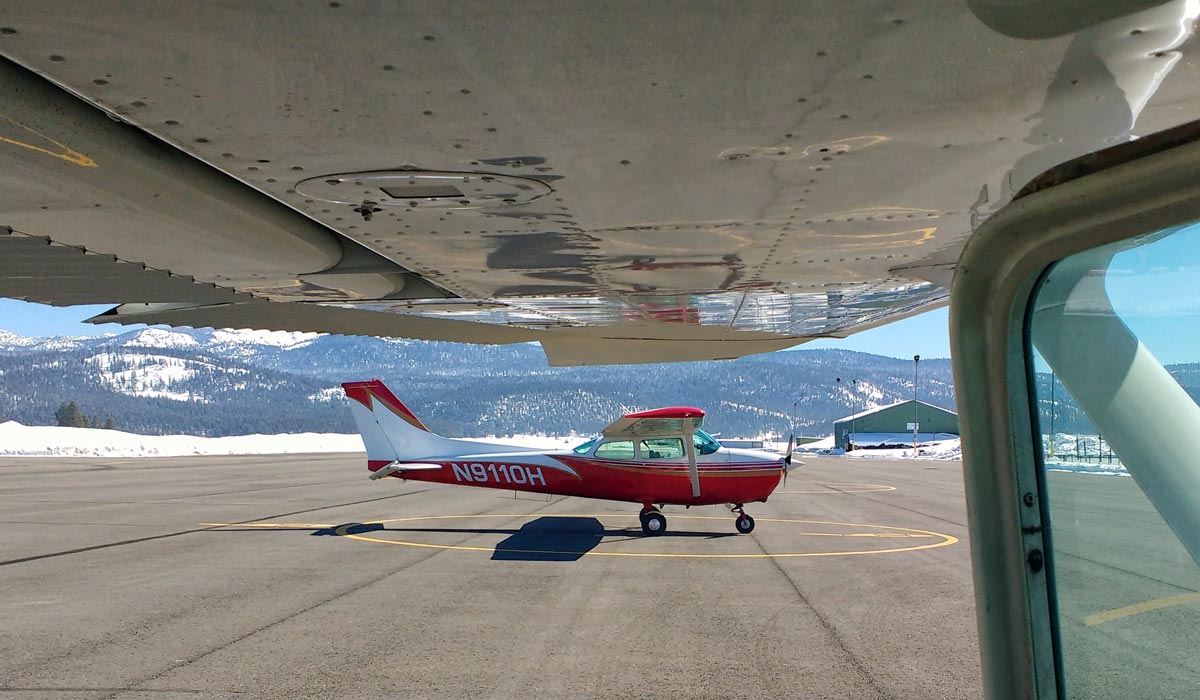
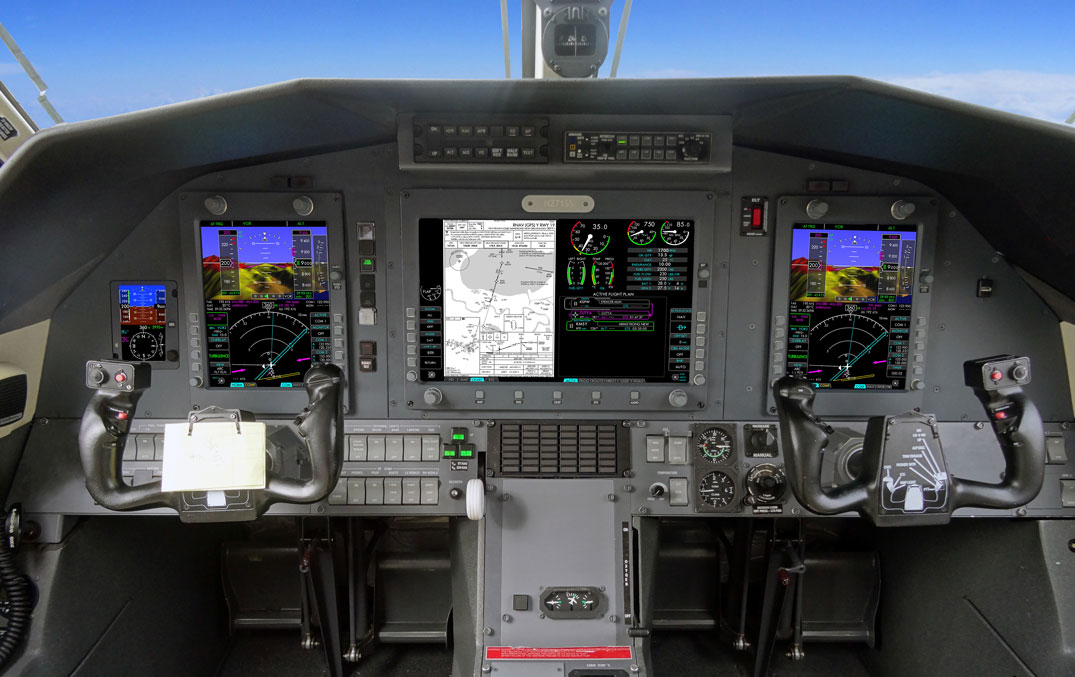
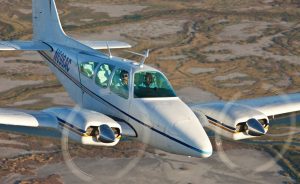



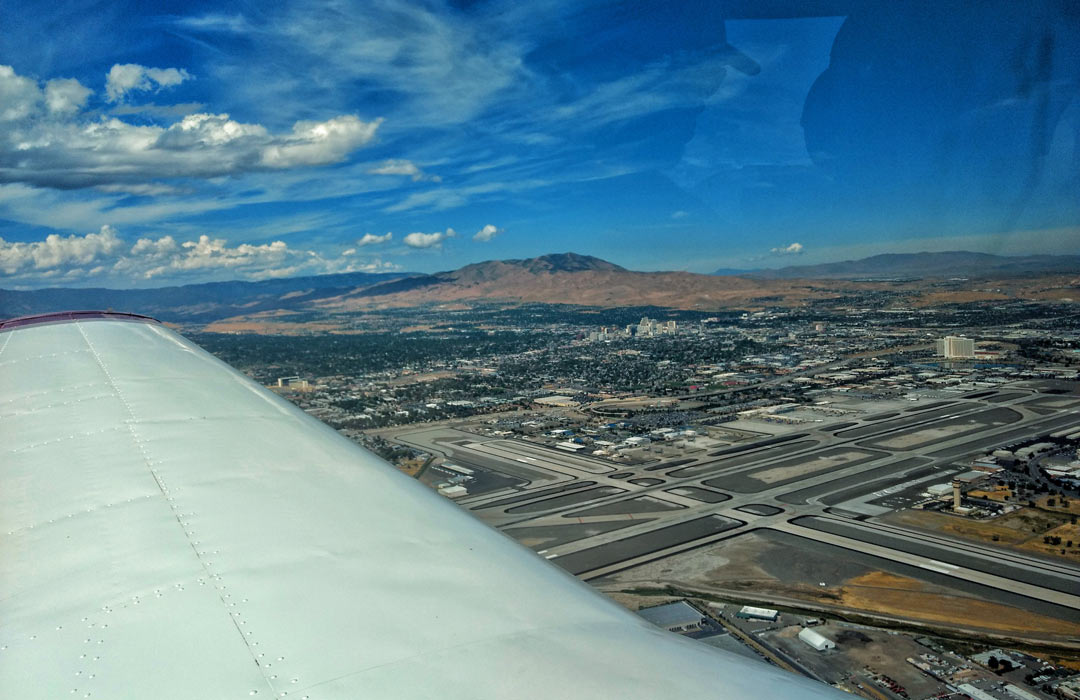

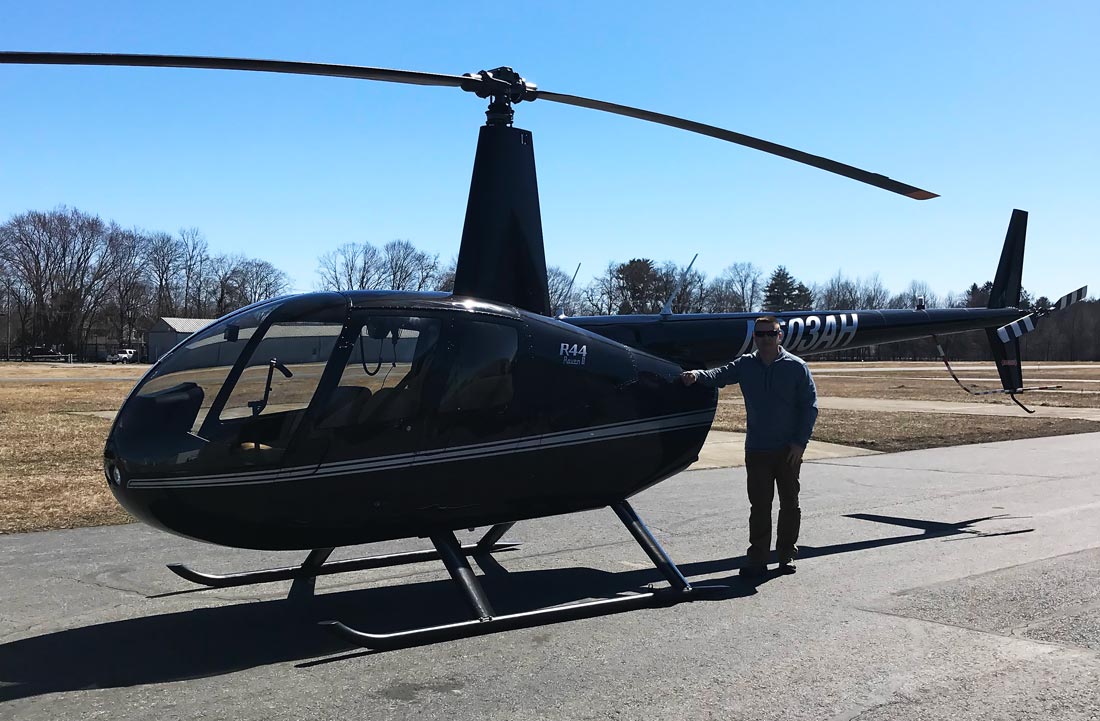

Leave a Reply